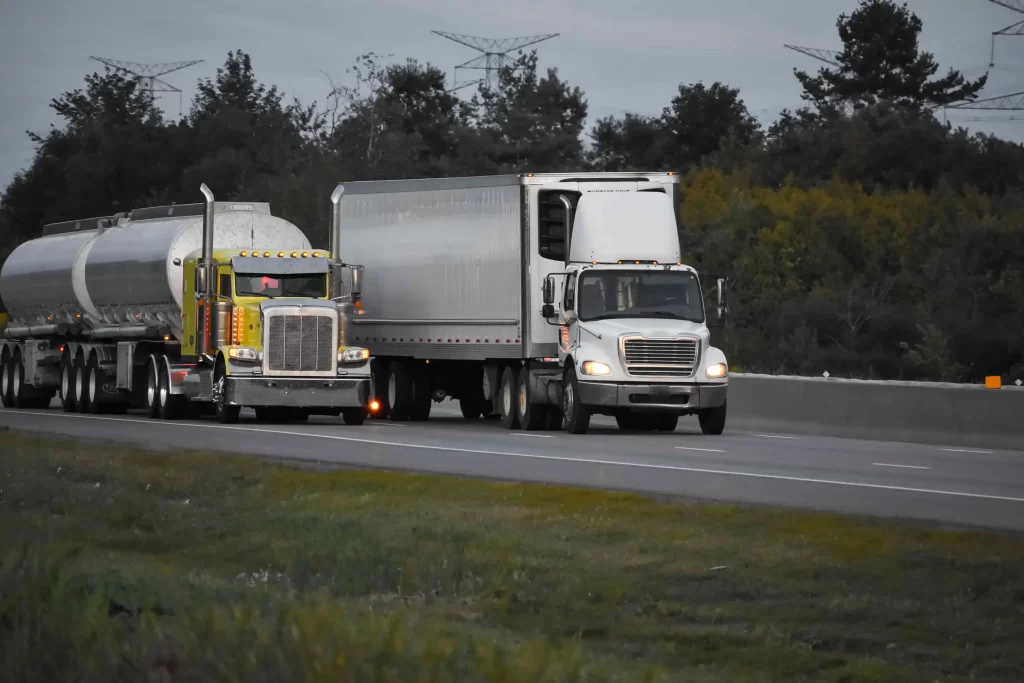What is Idle Time?
When a vehicle is parked but the engine is still running, it is considered idle. This often happens when there are traffic jams or red lights. This results in the engine using fuel pointlessly, increasing expenses and harming the environment. While some idle time is unavoidable, excessive idle time results in additional costs and pollution. Tackling idle time, not only saves money and extends engine life, but also helps make the world a cleaner, greener place.
Impact of Idle Time
Idle time has a big impact on how vehicles run and what they cost. When vehicles sit idle, they burn fuel without moving, usually about 1 gallon per hour. So, if a delivery truck sits still for half an hour, it wastes about half a gallon of fuel.
Also, idling for too long wears down engine parts faster, meaning more repairs and more costs. For instance, a taxi fleet that idles a lot might need more spark plug changes and engine fixes. Plus, idling makes vehicles less fuel efficient.
Engines work best when moving, so when they idle a lot, they use up more gas. This can make a big dent in a vehicle’s miles per gallon rating, like when a commuter car is stuck in traffic for ages. On top of that, too much idle time messes with operations. If a delivery van idles too much at stops, it can mess up deliveries and make customers unhappy.
Causes and Types of Idle Time

Vehicles can experience downtime for several reasons, regardless of their operational readiness. Idle time can result from both manageable and unforeseeable factors. Examples include employees killing time, and external influences such as supply chain disruptions or adverse weather. It’s crucial to recognize and resolve these issues to reduce idle time, enhance fleet efficiency, and mitigate financial losses, promoting streamlined operations.
Management Mistakes
When planning and decision-making go south, it can eat up precious time. Imagine a new manager of your fleet not being aware of how much time employees are idling in the yard or parking lot before leaving or starting their day. If managers are not aware or informed of this activity, this could lead to increased costs, less production, and overtime headaches.
Market Dynamics
Ever seen a business hit the brakes because a new player joined the game? That’s what happens when market dynamics shift unexpectedly. Sometimes, demand dips, and companies have to pump the brakes on production. Other times, things like employee strikes or economic hiccups, like the COVID-19 supply-chain crunch, throw a wrench in the works.
Ineffective Onboarding
Inefficient onboarding processes often escape notice as factors behind idle time. When onboarding lacks organization, it hampers productivity as new staff grapples with company protocols and idle time throughout the day or week can help managers pinpoint these delays and get to the root cause quickly. Acknowledging the significance of streamlined onboarding is critical for reducing idle time in the field and enabling new hires to swiftly assimilate into the team, enhancing their contributions to the organization.
Unforeseen Personal Issues
Stress or health-related employee absences can significantly contribute to idle time at work. When staff members are unable to work due to personal issues, it disrupts productivity and workflow. These gaps in the workforce can cause delays in completing tasks and impact team performance. It’s essential to address the underlying causes of absenteeism to reduce idle time and ensure smooth operations.
Natural Tragedies
Weather disturbances can affect industries like transportation, mining, and shipping. Delays in the supply chain can occur from natural disasters that stop operations. Teams are often left waiting out storms, leading to decreased productivity. Travel delays exacerbate the situation, affecting multiple organizations within the supply chain.
Types of Idle Time
Normal Idle Time
This type of idle time is beyond management’s control and involves planned downtimes for preventive maintenance (PM) activities. These tasks are essential practices required to sustain business operations. While they may seem unproductive, they are crucial for maintaining equipment functionality and ensuring the continuity of business processes.
Abnormal Idle Time
This scenario falls entirely outside of management’s jurisdiction. It encompasses factors like employee strikes and disruptions in production supplies. While these issues may disrupt operations, they are beyond the realm of managerial influence and require adaptive strategies to mitigate their impact on productivity.
Planned Idle Time
Planned idle time refers to scheduled periods of inactivity within the production process. These intervals are deliberately built into the operational schedule to accommodate routine maintenance, equipment calibration, or setup for subsequent production runs.
Unlike unplanned downtime, which can disrupt workflow unexpectedly, planned idle time is strategically incorporated into the production process to guarantee optimal efficiency and minimize the risk of equipment failure or malfunction.
Unplanned Idle Time
Unplanned idle time occurs when production unexpectedly slows down, distinct from planned breaks for maintenance or setup. It arises from surprises like equipment breakdowns, low supplies, or staffing issues, disrupting workflow and hindering production targets, which raises costs. Minimize idle time by identifying and addressing its causes. This is crucial for maintaining smooth production operations.
Formula Overview
Idle time is figured out by taking away the time actually spent producing from the time scheduled for production. Scheduled production time is when management plans to run equipment, whether daily, weekly, monthly, or yearly. Actual production time is when the equipment is up and running as it should. So, for instance, if a technician works 6 out of 8 hours in a shift, they’ve had 2 hours of idle time.
Similarly, if a conveyor belt is required to run for 10 hours daily but experiences downtime due to a late operator arrival or routine maintenance, the difference between the scheduled and actual run time constitutes idle time. When companies perform preventive maintenance, they can reduce instances of idle time and improve overall productivity.
Solution

Traxxis’s GPS tracking solution is like a superhero for tackling idle time. It helps businesses fight idle time by keeping an eye on what vehicles are up to in real time. Fleet managers can spot and cut down on idling right away. Traxxis comes with cool features to help beat idle time before it becomes a problem, such as real-time in-cab notification of excessive idling of the vehicle, driver and vehicle performance dashboards and reporting, and carbon emissions reporting tools. With Traxxis GPS’s solutions, businesses can make their fleets run smoother, save on fuel, and do their part for the environment by keeping idle time in check.
Tracking Benefits
By leveraging GPS tracking software to address idle time, your business can enjoy several advantages, including:
Improved Fuel Efficiency
Fuel costs are a big part of fleet expenses; whenever an engine is idling, it will cost you money. You can cut fuel expenses by up to 14%. Its advanced features enable businesses to enhance travel and logistics, leading to significant cost reductions with Traxxis. By tracking idle time, businesses can identify and address inefficiencies in driver behavior and route selection, minimizing unnecessary fuel consumption. Without this technology, operations may suffer from fuel wastage due to various inefficiencies, leading to increased emissions and expenses over time.
Reduced Maintenance Costs
By accurately calculating idle time, businesses can better schedule preventative maintenance for their fleet vehicles. This proactive approach guarantees that maintenance schedules are based on actual engine usage rather than just mileage, leading to fewer unexpected breakdowns and lower repair expenses. Competitors utilizing GPS technology gain a significant edge by maximizing vehicle uptime and minimizing maintenance-related downtime.
Business Decisions
These include selecting the appropriate GPS tracking system tailored to monitor idle time effectively and deciding on the implementation strategy for integrating it into existing production processes. They need to determine how to utilize the collected data to optimize fleet management and reduce idle time, while also providing employee training on GPS tracking systems’ usage and their impact on production processes. Clear policies and guidelines must be established regarding GPS tracking usage and consequences for excessive idle time, alongside establishing metrics and benchmarks for performance evaluation to measure the technology’s effectiveness in reducing idle time and enhancing fleet efficiency.
Impact on Productivity

Excessive idle time significantly impacts profitability, primarily through fuel wastage and lost time in the field. It impacts a company’s competitive edge, particularly for those operating extensive fleets. As per the North American Council for Freight Efficiency, idling can consume between 0.6 to 1 gallon of fuel every hour. Vehicle battery-powered air heaters alone can use a gallon of fuel daily. The council’s report emphasizes the need for fleets to utilize a combination of technologies, highlighting the crucial role of drivers in successfully managing idle times. Accurately tracking idle time is essential for implementing effective solutions and optimizing fleet performance.
Wrap-Up
For businesses that rely on industrial processes or have fleets, idle time management is essential. Using GPS tracking technology has several benefits, including improved productivity, greater gas economy, and lower maintenance expenses. By using the idle time formula to accurately track idle time, businesses may increase overall production, identify inefficiencies, and optimize resource allocation at the same time. Clear policies, staff training, and strategic decision-making are necessary for successful implementation. Proactively reducing idle time enhances profitability and competitiveness, leading to greater success for businesses across various sectors.
Frequently Asked Questions
How Can Companies Effectively Minimize Idle Time?
To effectively minimize idle time, companies can implement various strategies. Utilizing advanced GPS tracking technology allows for accurate monitoring and analysis of idle time patterns, pinpointing root causes such as equipment downtime. By establishing preventive maintenance schedules and addressing potential issues proactively, companies can minimize unplanned idle time. Optimizing workflow processes, scheduling tasks efficiently, and providing ongoing training to employees are also vital in reducing idle time and maximizing productivity.
What Are Some Common Tools Used To Track Idle Time?
Popular tools for tracking idle time include GPS tracking systems, which monitor vehicle movement and engine activity, offering real-time insights into idle periods. Telematics solutions provide data on engine usage, fuel consumption, and equipment downtime, aiding in identifying idle time trends. Time-tracking software logs employee activities, pinpointing unproductive periods. Moreover, maintenance management systems track equipment downtime, enabling proactive maintenance scheduling for maintenance teams to reduce idle time and enhance operational efficiency.
How Does Idle Time Impact Operating Costs?
Think about it like when your vehicle’s engine is on but you’re not going anywhere. It’s burning fuel for nothing! Plus, all that idling wears down your ride faster. And when your team’s not hustling, you’re still shelling out for their time, but the work output takes a hit. To keep costs in check, we have to find ways to cut idle time, make smarter moves with what we’ve got, and just run a tighter ship overall.
Can Idle Time Be Completely Eliminated?
While it may not be feasible to entirely eradicate idle time, companies can notably diminish it by employing effective management techniques. Utilizing strategies such as streamlining workflow processes, instituting proactive maintenance schedules, and harnessing technology solutions like GPS tracking systems can effectively curb idle time. These approaches empower businesses to optimize resource utilization and enhance operational efficiency, leading to reduced idle periods and improved productivity. Promoting employee awareness and accountability regarding idle time can further contribute to its reduction. While complete elimination may be challenging, proactive measures can substantially mitigate its impact on operational efficiency and costs.
How can I measure the impact of idle time reduction in GPS tracking?
Businesses can measure the impact of idle time reduction efforts by analyzing key performance indicators such as fuel consumption rates, maintenance expenses, vehicle utilization rates, and overall fleet productivity. Comparing data before and after implementing idle time reduction strategies can provide valuable insights into their effectiveness.
How can I minimize idle time?
To minimize idle time, businesses can implement several strategies. These include optimizing workflow processes to ensure efficient task completion, scheduling preventive maintenance to minimize equipment downtime, and leveraging technology solutions like GPS tracking systems to monitor and address idle periods. Additionally, providing proper training to employees on productivity best practices and encouraging proactive communication can help identify and mitigate factors contributing to idle time, thereby improving overall operational efficiency.





